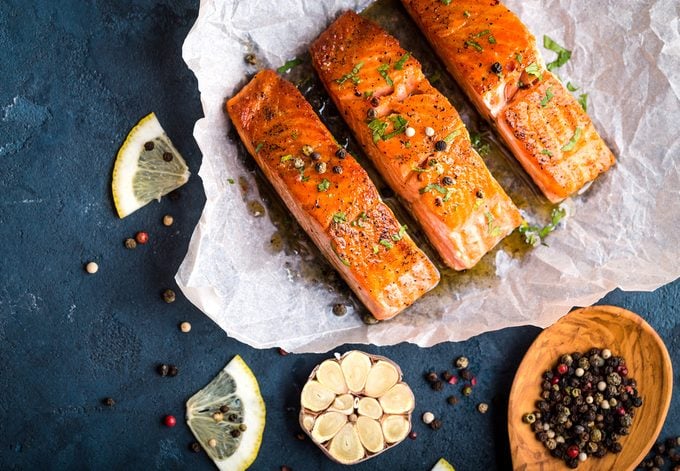Understanding Different Types of Fat
Updated: Jun. 26, 2018
Saturated, unsaturated, monounsaturated, polyunsaturated... Confused about fat? Don't be. Here's the good, the bad, and the ugly.
 There are three naturally occurring types of fat: monounsaturated, polyunsaturated, and saturated. A fourth type of fat — “trans fats” — is man-made. Here’s what you need to know about each one, minus all the science.
There are three naturally occurring types of fat: monounsaturated, polyunsaturated, and saturated. A fourth type of fat — “trans fats” — is man-made. Here’s what you need to know about each one, minus all the science.
- Monounsaturated fat. These fats should take the lead in your diet (at least, as far as fat is concerned). They star in the so-called Mediterranean diet, proven to lower cholesterol and reduce the risk of heart disease. A primary source of mono fats is olive oil. Other good sources include canola oil, seeds and nuts, and avocados.
- Polyunsaturated fat. This form of fat is prevalent in vegetable oils, nuts, fish, and some leafy green vegetables. There are two main types of the “polys”: omega-6s, which we tend to get plenty of through corn and other vegetable oils, and omega-3s, found primarily in fish and certain seeds, which we rarely get enough of. Focus on increasing the amount of omega-3 fatty acids in your diet while reducing the amount of omega-6s and you’ll get the right ratio of polys.
- Saturated fat. This form of fat is found in the highest amounts in animal products, as well as palm and coconut oil. You’ll know a fat is heavy on the saturated side if it’s solid at room temperature, like shortening or lard. Saturated fat raises levels of “bad” LDL cholesterol, and can increase your risk of heart disease. In fact, switching just 5 percent of your overall calories from saturated to unsaturated fats could slash your risk of a fatal heart attack as much as 42 percent.
- Trans fats. Trans fats are polyunsaturated fats gone bad. They don’t exist in nature, but are created when polyunsaturated fats are whipped with hydrogen to make them solid at room temperature. They not only increase LDL levels, but they can decrease HDL levels. They’ve been implicated in heart disease and breast cancer. When it comes to trans fat, no level is safe. Yet they’re everywhere you find processed foods, including nearly all crackers, cookies, baked goods, snacks, and other packaged foods. The good news is, these days you can find trans-fat-free options in nearly every food category; you just have to look for them.
Originally Published in Reader's Digest